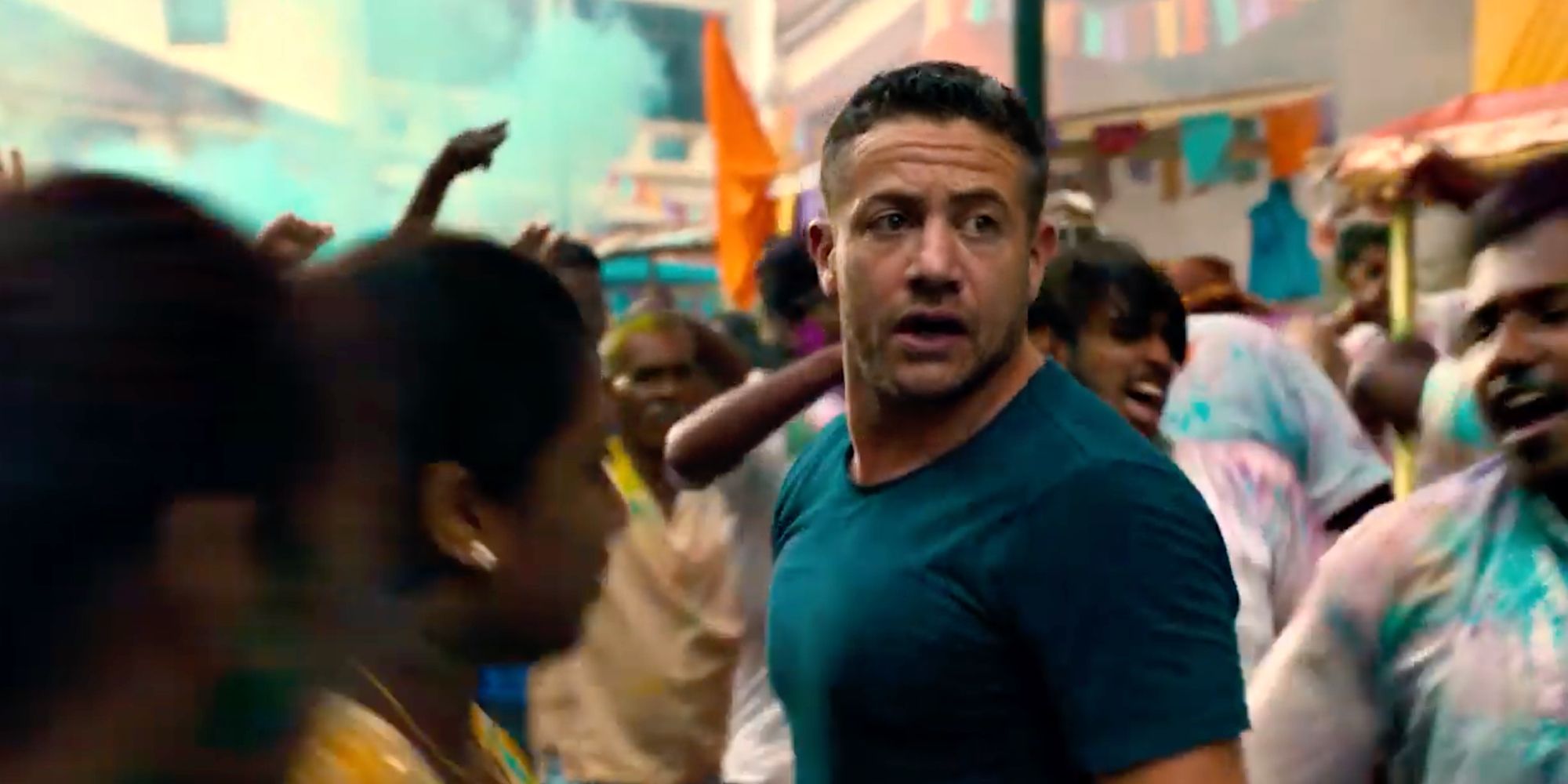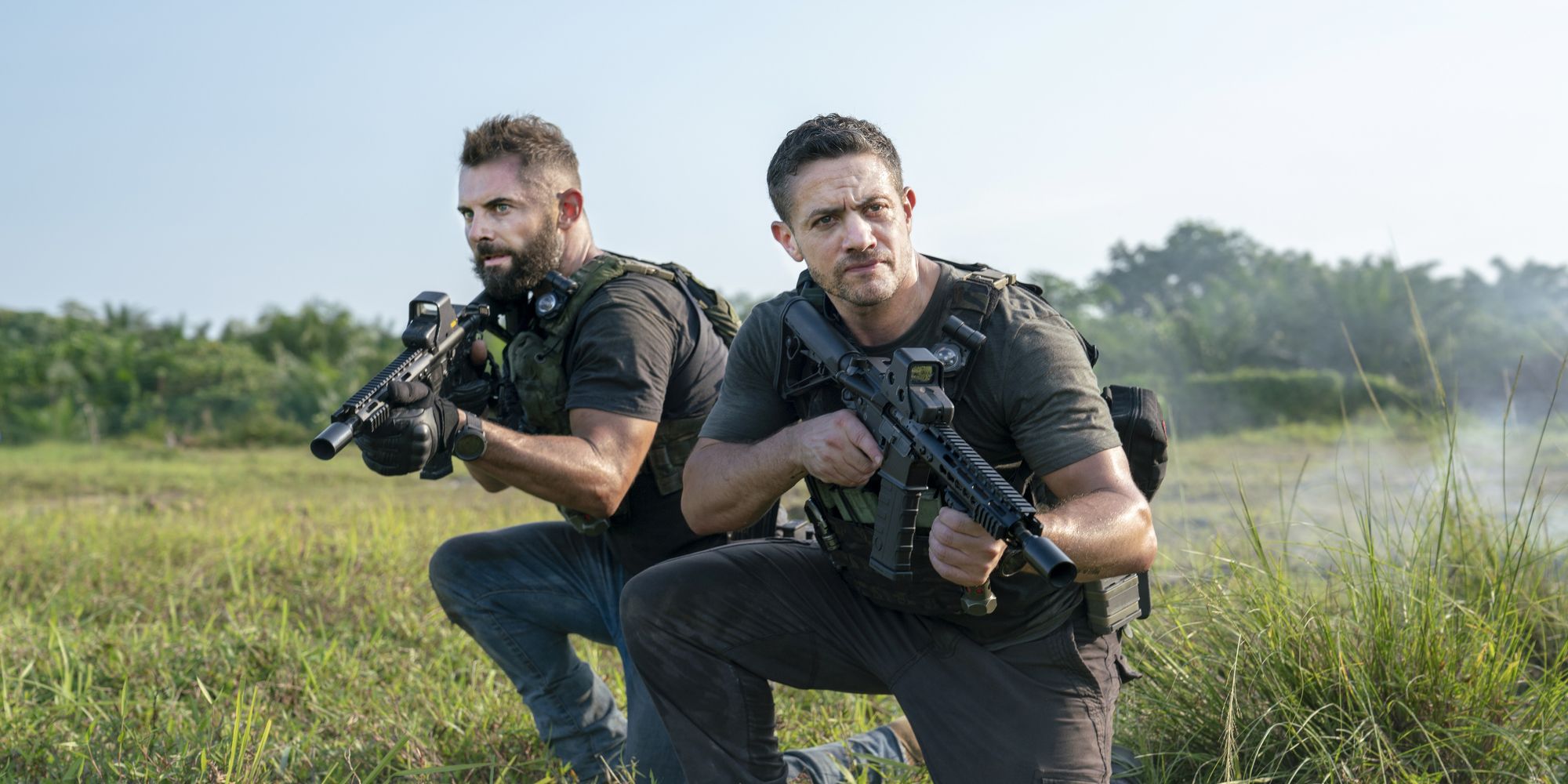Episode 3 of Strike Back season 6 features one of the most thrilling and visually impressive action sequences of the season, and the episode’s director, Paul Wilmshurst, discusses how it came about. An Emmy-winning veteran of the television industry, Wilmshurst has helmed episodes of numerous other series, like Doctor Who and Law & Order: UK, but he’s also been directing action-packed episodes of Strike Back since 2011, back with stars Philip Winchester and Sullivan Stapleton. Now, Wilmshurst has returned to the series for a two-episode stint with the new cast of Warren Brown, Daniel MacPherson, and Alin Sumarwata, and his first episode back finds him taking Section 20 through a vibrant but chaotic Holi festival in a wild action sequence.
Strike Back is off to a great start in season 6, as the team is now back together and getting into the sort of trouble fans have long come to expect, albeit under the leadership of newly appointed CO Col. Alexander Coltrane (Jamie Bamber, Battlestar Galactica). The new episodes have wasted no time getting around to blowing stuff up, as the team has already been caught in the crossfire of a skirmish between the Triad and some covert Russian agents, headed up by series newcomer Yasemin Kay Allen as Katrina Zarkova. And while the season has also featured a few terrific fight sequences, it’s the team’s trek to Goa, India to recover a missing nuclear warhead (naturally) and an abducted scientist that makes episode 3 so exciting,
More: White Dragon Review: Conspiracy Thriller Works Despite Too Many Moving Parts
In advance of the episode's premiere, Wilmshurst spoke with Screen Rant about the challenges of creating this particular sequence, and how, despite an accelerated shooting schedule, the show’s actors, stunt professionals, and crew were able to pull it all off. Check out an exclusive clip of the sequence, as well as our interview with Wilmshurst below:
You've helmed several episodes of Strike Back before now and I was wondering what it is about the show that brings you back?
“Sure, I think a lot of people find themselves pulled back to Strike Back. It's a little bit like an addiction. It's not like any other show I've worked on. I find that I miss the thrill of Strike Back when I'm doing anything else, to be honest. There's a kind of organized madness about it. The things that we do in the amount of time that we have, seem impossible somehow but yet, you know it's like, every day you go to work and you, kind of, bite the bullet and at the end of it you've done another sequence and it all adds together into the show.
There's something very quite grueling but also quite exhilarating about it and I think that comes through in the viewing experience as well. I think all the actors are going through a kind of hell and also enjoying themselves at a level that they probably will never in any other job again.”
Visually speaking, this is one of the more complex sequences the show's done in quite a while. There are so many moving parts with all the actors, the extras, and then the brilliant colors that are part of the festival itself. Can you walk through how exactly you managed to produce something like that on a television shooting schedule?
“This sequence was built into the plans of this episode from the very beginning; it was always going to be a centerpiece. A sequence in the middle of the Holi festival with the colors flying fast and furious coming off the crowd as the team moves through it trying to protect this man. We all knew it was a good idea. It was one of the things that drew me to this block and to the story, and the thought of being able to do an action sequence in the Holi festival just felt really exciting.
We were shooting in a city with a lovely old town and streets that have not been developed and have not been turned into a glossy city center. It's a real feeling of history and walking inside of history. We wanted to feel that, we wanted to feel that we were in a beautiful and historical area. But we also wanted to show that we were, in a sense, in the middle of this quite wild festival. And so that was tricky. There was a lot of planning that just went into things like sourcing the right kind of colored paint. It had to have strong colors but also be safe. It couldn't stain the buildings, and it wouldn't stain people's skin, and it would be safe to breathe."
"And then for our scene we had to kind of work out the formation that [the cast] would be in, how they would touch each other's back and support one another in a really big crowd. That part was tricky as we had to show what [these trained soldiers] do in the crowd, how do you do it so you don't lose sight… hand on shoulder... and it naturally came into play with a little bit of rehearsing and a little bit of practice. And then it was really just taking it step by step. We shot it chronologically; we started with the car pulling in and then being stopped by the crowd. We had the sequence when [Section 20] would get interrupted, they get pulled off to the side and then that was the afternoon of the first day, and then the rest of it was spent doing a series of little fights.
Day two we moved from the street into the park where everything is kind of ramped up even more. We filmed the climax and that involved throwing paint as well as smoke. Everything was a bit faster and a bit louder, and then at the end of that day, Jamie [Bamber] comes running through. We finished with the characters under the tree, which was kind of an amazing moment to me because it's very easy to get caught up in the action: where we put the cast, splatter the paint, where the fights are going to happen, and then making sure that you would feel that you were inside this turmoil. But you also get this moment where Pallavi Sharda is watching her father die, and suddenly it's like all the directing is irrelevant because it is then about an emotional scene between a daughter and her father, and you've got a man who is dying and his daughter’s reaction was so raw and real.”
How often do you have a chance to run the idea through a few different iterations before committing it to film. Is there time for that or are you really just constantly on the go?
“You build as you go along, so we didn't have a chance. Each section was being constructed as you go forward because we didn't have a chance to rehearse with the lead actors until we get there on the day.”
To what degree, from a creative standpoint, are you and the producers, and the actors looking to outdo what's come before. Is there a desire to top yourselves in the terms of the level of spectacle?
“Yes, I think so. And trying not to repeat yourself. I think something like this was really appealing because it felt like I've seen people doing dramatic scenes in Holi festivals. I've seen representations of Holi festivals, but I haven't seen an action sequence in a Holi festival, and it felt exciting, and it felt challenging. It's like, ‘How do you deal with a situation that is changing so frequently?’ and we made a decision at the beginning that we would throw continuity out the window for this one and treat it more like a documentary in that sense. The emphasis would be on a moving crowd and a turbulent crowd, and the intention is that it would feel as if we had shot this as part of a bigger experience. We kind of boiled everything down and it's not just that you're experiencing something in realtime, its more like a hyper-concentrated version of the experience.”
Next: PEN15 Review: A Raunchy But Sweet Coming-Of-Age Comedy
Strike Back season 6 continues with episode 3 tonight @10pm on Cinemax.


